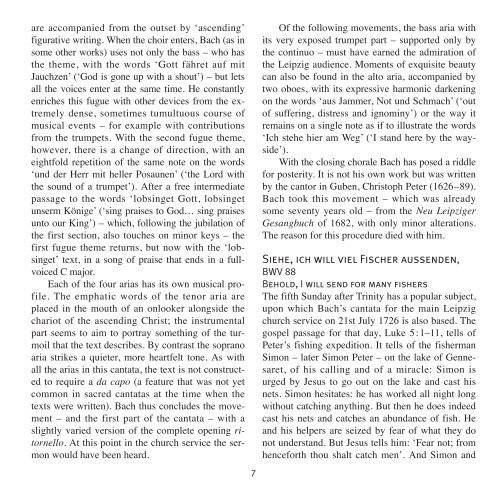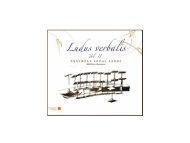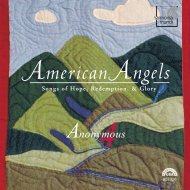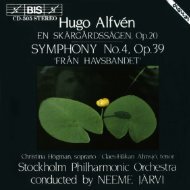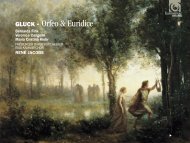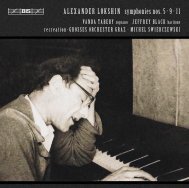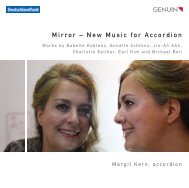Album booklet - eClassical
Album booklet - eClassical
Album booklet - eClassical
You also want an ePaper? Increase the reach of your titles
YUMPU automatically turns print PDFs into web optimized ePapers that Google loves.
are accom panied from the outset by ‘ascending’<br />
figurative writing. When the choir enters, Bach (as in<br />
some other works) uses not only the bass – who has<br />
the theme, with the words ‘Gott fähret auf mit<br />
Jauchzen’ (‘God is gone up with a shout’) – but lets<br />
all the voices enter at the same time. He constantly<br />
enriches this fugue with other dev ices from the ex -<br />
tremely dense, sometimes tumul tuous course of<br />
musical events – for example with con tributions<br />
from the trumpets. With the second fugue theme,<br />
however, there is a change of direc tion, with an<br />
eightfold repetition of the same note on the words<br />
‘und der Herr mit heller Posaunen’ (‘the Lord with<br />
the sound of a trumpet’). After a free intermediate<br />
passage to the words ‘lobsinget Gott, lobsinget<br />
unserm Könige’ (‘sing praises to God… sing praises<br />
unto our King’) – which, fol low ing the jub ila tion of<br />
the first section, also touch es on minor keys – the<br />
first fugue theme returns, but now with the ‘lob -<br />
singet’ text, in a song of praise that ends in a fullvoiced<br />
C major.<br />
Each of the four arias has its own musical pro -<br />
file. The emphatic words of the tenor aria are<br />
placed in the mouth of an onlooker alongside the<br />
chariot of the ascending Christ; the instrumental<br />
part seems to aim to portray something of the tur -<br />
moil that the text describes. By contrast the soprano<br />
aria strikes a quieter, more heartfelt tone. As with<br />
all the arias in this cantata, the text is not con struct -<br />
ed to require a da capo (a feature that was not yet<br />
common in sacred cantatas at the time when the<br />
texts were written). Bach thus con cludes the move -<br />
ment – and the first part of the cantata – with a<br />
slightly varied version of the complete opening ri -<br />
tor nello. At this point in the church service the ser -<br />
mon would have been heard.<br />
7<br />
Of the following movements, the bass aria with<br />
its very exposed trumpet part – supported only by<br />
the continuo – must have earned the admiration of<br />
the Leipzig audience. Moments of exquisite beauty<br />
can also be found in the alto aria, accompanied by<br />
two oboes, with its expressive harmonic darkening<br />
on the words ‘aus Jammer, Not und Schmach’ (‘out<br />
of suffering, distress and ignominy’) or the way it<br />
remains on a single note as if to illustrate the words<br />
‘Ich stehe hier am Weg’ (‘I stand here by the way -<br />
side’).<br />
With the closing chorale Bach has posed a riddle<br />
for posterity. It is not his own work but was written<br />
by the cantor in Guben, Chris toph Peter (1626–89).<br />
Bach took this movement – which was already<br />
some seventy years old – from the Neu Leipziger<br />
Gesangbuch of 1682, with only minor al terations.<br />
The reason for this procedure died with him.<br />
Siehe, ich will viel Fischer aussenden,<br />
BWV 88<br />
Behold, I will send for many fishers<br />
The fifth Sunday after Trinity has a popular sub ject,<br />
upon which Bach’s cantata for the main Leipzig<br />
church service on 21st July 1726 is also based. The<br />
gospel passage for that day, Luke 5:1–11, tells of<br />
Peter’s fishing expedition. It tells of the fisherman<br />
Simon – later Simon Peter – on the lake of Gen ne -<br />
saret, of his calling and of a mir acle: Simon is<br />
urged by Jesus to go out on the lake and cast his<br />
nets. Simon hesitates: he has worked all night long<br />
without catching anything. But then he does indeed<br />
cast his nets and catches an abundance of fish. He<br />
and his helpers are seized by fear of what they do<br />
not understand. But Jesus tells him: ‘Fear not; from<br />
henceforth thou shalt catch men’. And Simon and


